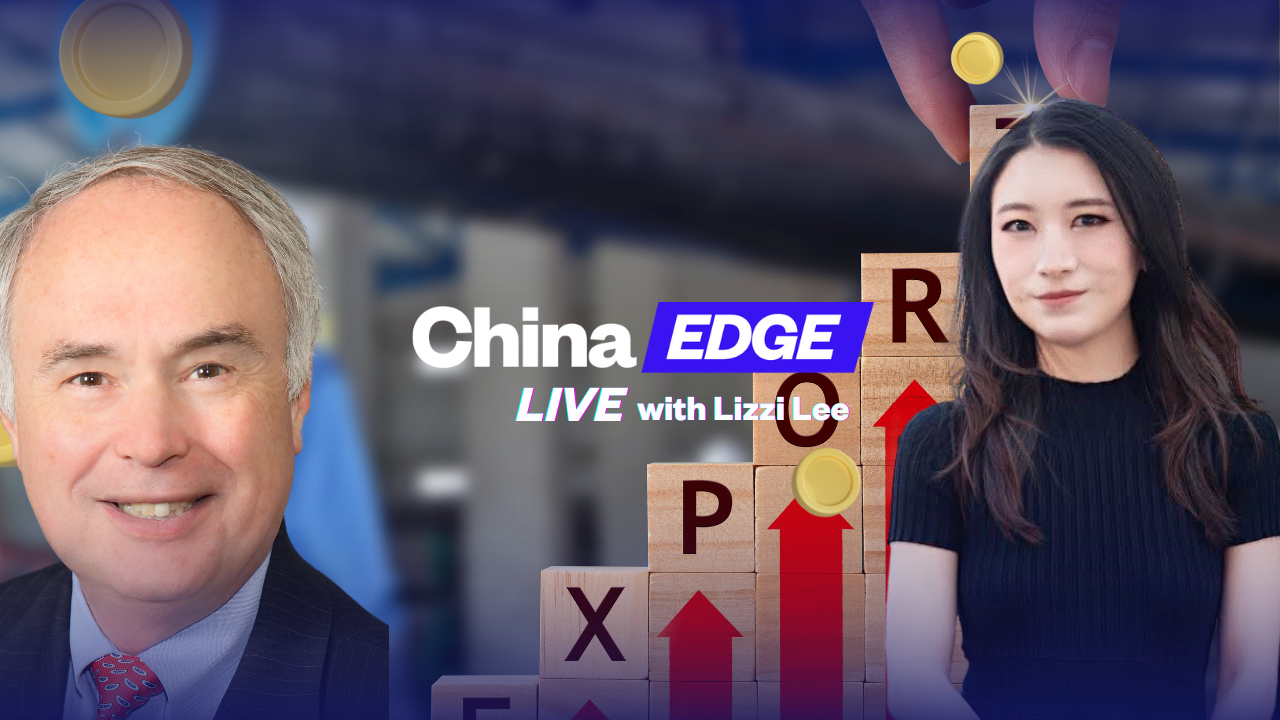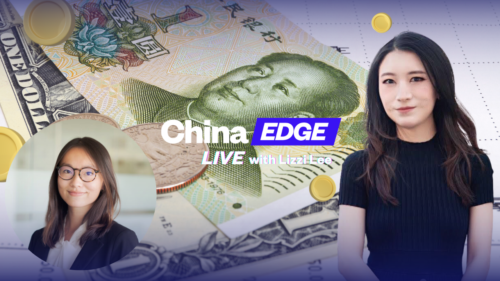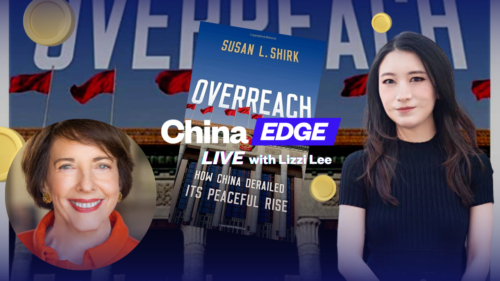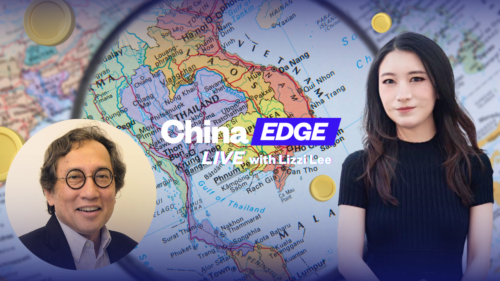How did a Chinese chipmaking firm get through the U.S. export ban? | Live with Lizzi Lee
Bill Reinsch, international business chair and senior advisor for the CSIS and former National Trade Council president, explains what a recent Wall Street Journal article might have missed about U.S. export controls on sensitive technology.

Good investing starts with an edge, and our ChinaEDGE intelligence database and newsletter reports help you get sharp on China. Every week, our host Lizzi Lee interviews the most knowledgeable minds on China for analysis of the ever evolving business and technology ecosystem.
In this episode of Live with Lizzi Lee:
Bill Reinsch, international business chair and senior advisor for the Center for Strategic and International Studies and former National Trade Council president, unpacks U.S. export controls on certain technologies that go to foreign countries, and how the Chinese chipmaker SMIC gained the capability to make 7 nanometer chips.
Below is a transcript of the video:
Lizzi: Joining me today is Mr. Bill Reinsch, international business chair and senior advisor for the Center for Strategic and International Studies and former National Trade Council president. Thank you so much for being here with me. Mr. Reinsch.
Bill Reinsch: Thank you. Happy to join you.
Lizzi: So, Mr. Reinsch, in 2018, Congress passed a law requiring the Commerce Department to extend controls on certain technologies that go into foreign countries.
I wonder if you can help us understand how the law actually works in practice. What is the entity list and what kind of companies, especially Chinese companies, are on it?
Bill Reinsch: Well, there are two separate issues there. What the 2018 law instructed the Department of Commerce to do was to identify emerging and foundational technologies and then to consider whether they needed to be controlled. The department is in the process of doing that. I think some of the people in the Congress expected that the Commerce Department would right away come out with a long list of technologies and they would all be controlled. That hasn’t happened.
The department has been very selective and very careful in identifying emerging technologies, things that are new. And because they’re brand new, they’re not controlled now. And so the issue is maybe we should take a look at new things and see if they need to be controlled.
So far, commerce has worked primarily multilaterally. There are a number of export control regimes where usually somewhat more than 40 countries have gotten together and agreed to try to control things the same way. And commerce department’s preference has been to work through that structure so that we’re not the only ones controlling something. And I think that’s proceeding. It’s just proceeding slowly and not as fast as some people want.
But I think it’s they’re doing it in the responsible way.
The entity list is different. The entity list actually began in the 90’s when I was the undersecretary of commerce running this program. And the original idea was that it would be a relatively small list of companies that are engaged in or that we think are engaged in nuclear proliferation. And the idea was, if you’re on the list, what that means is that a license is required to export anything to you. So, it doesn’t matter if it’s a coffee cup or a semiconductor chip or a machine tool or a pencil, they would all need a license.
Late in the Obama administration and in the Trump administration, and now there’s been a real expansion of the entity list where it’s used not just to deal with nuclear peripheral proliferators, but basically anybody that’s doing things we don’t like ends up on the entities list.
I think it’s important for your viewers to keep in mind that for the United States, this is a two step decision. Being put on the entity list doesn’t automatically mean that nothing is going to be exported to you.
Being put on the end of this list means that if you want to export something to that company, you need to get a license. Licenses get approved.
One of the issues being debated here is a lot of licenses have been approved for Huawei, which is on the entity list. And the reason is because these are low end items that don’t have any security implications. So just being on the list doesn’t mean that you’re denied 100%.
Lizzi: And if you recall, on August 16, the Wall Street Journal published a report stating that the Commerce Department led process that approves U.S. tech exports to China, approves almost all actually 94% of requests, and has overseen an increase in the sales of some particularly important technologies. And you came up with an essay pushing back some of the statements in that report. I wonder if you can walk us through some of the key arguments that you have. Why is the report flawed or misleading?
Bill Reinsch: Yeah, I wrote a cranky column about this that people can access on the CSIS website if they want the details.
First of all, I pointed out that there was an irony that the article mostly quoted former Trump administration officials and used data from 2020, which means the things they were complaining about are things that happened on their watch.
So, if you want to blame anybody — I’m not sure that blame is the right word, but if you want to blame people, you should blame the people that are doing the complaining.
If you look at the data that they’re talking about, the number of license denials has gone up in the Biden administration by 197%. So, if you think that the answer to our problem is more denials, then the Biden administration is actually doing what you want.
The more important point is that that’s not the right measure of what’s going on. First of all, saying that the approval rate was 94% ignores the fact that it’s been around 90% for at least 30 years. So this is not anything new. In fact, it’s gone down in the Biden administration to 88%, which is kind of a relatively low point.
The reason it’s so high is simple. It’s high because companies that know their licenses are going to be rejected don’t apply. So, why spend the money, why waste the time if you know the answer is going to be a rejection? The system has always been statistically skewed toward approvals, and that’s no surprise at all. And in fact, it’s been going down.
I think the other problem with the article is that…And this is illustrated by the Huawei case…Is that it’s been very little time looking at what was being approved. And as I said with Huawei, if you’re on the entity list, you need a license for anything.
So, if we’re shipping coffee cups or pencils or low-end semiconductor chips to Huawei, of course those licenses are going to be approved because they don’t have any strategic significance. Now, if you think that the right policy to pursue it with respect to China is a complete embargo, then of course, you’re going to be unhappy about that.
But the point of export controls is not an embargo. The point of export controls is to keep the target entity from getting things that would allow the country in question, in this case, China, to enhance its military capabilities.
The mantra that the department has used since my time there has been “higher fences around a smaller number of items.” Let’s focus our controls on the stuff that matters, and let’s not worry about the stuff that doesn’t matter. And I think that’s what the department is doing. And that’s the point the article missed.
Lizzi: Speaking of this “higher fences around a smaller list of items” philosophy, the Chinese chip maker SMIC recently gained the capability to make the 7 nanometer chip, which has raised questions on whether the Commerce Department has been, you know, effectively restricting such expert licenses of the crown jewels of U.S. technology.
From your perspective, has the export control law been effective in protecting the U.S. national security interests? Are there aspects of the law that needs to be improved or loopholes that need to be closed?
Bill Reinsch: Well, I think there are two parts of that. There’s always leakage in export controls, if only because there are criminals out there who make a lot of money buying things and then surreptitiously selling them to people that are not supposed to have them. That’s been true since 1949, when the First Export Administration Act was passed. That’s not going to change.
If your goal is to make sure that the adversary gets nothing, then you’re doomed because that’s impossible. If your goal is to make sure that they only get one third of what they want and it costs ten times as much and it takes them five years rather than two years to acquire it, that’s an attainable goal and that’s what the department focuses on. So, first of all, you need to be realistic about the limitations. There is going to be leakage.
On the 7 nanometer chip in particular, I think this is a story where there are several more chapters to play out. If you talk to people about that in the U.S. government, they get very evasive very quickly, which tells me that there’s a whole story here that’s not being told. And you’re the reporter. So, you can spend time in the future figuring out what it is.
There have been a variety of rumors about this ship first that it exists, which seems to be true, but I think there’s more to that story.
One story is that it is probably a copy of a TSMC chip, which suggests that if there was a technology leak here, it came from Taiwan and not the United States, because TSMC is a Taiwanese company.
There is also a bit in the reports that it’s a very specific applications chip that has turned out not to be scalable. So, it may not have it may not be very significant in terms of Chinese capabilities. We don’t know, or at least if people do know, they’re not talking.
Finally, I think from a control and export control standpoint, the real question is what equipment was used to make the chip?
Because the United States and our friends and allies have always controlled the manufacturing equipment more tightly than the end product. So, we sell chips. We are much more careful about selling the lithography and other equipment that is used to make chips.
The United States domestically does not make seven-nanometer chips. And as far as I know, our companies, U.S. companies that make chipmaking equipment don’t make equipment that can make seven-nanometer chips. The company that does its ASML, which is a Dutch company, which also controls that technology.
So, you know, if the Chinese are making the chip with foreign technology, was there a system failure, if you will? Yes, there was a system failure. Was it a U.S. failure? That’s not clear.
And it may very well have been somebody else’s failure. At that very high-end level, we all coordinate in controlling the technology. And technology at that level is controlled. So if they’ve got it, something went wrong, but it’s not clear that what went wrong happened in the United States.






